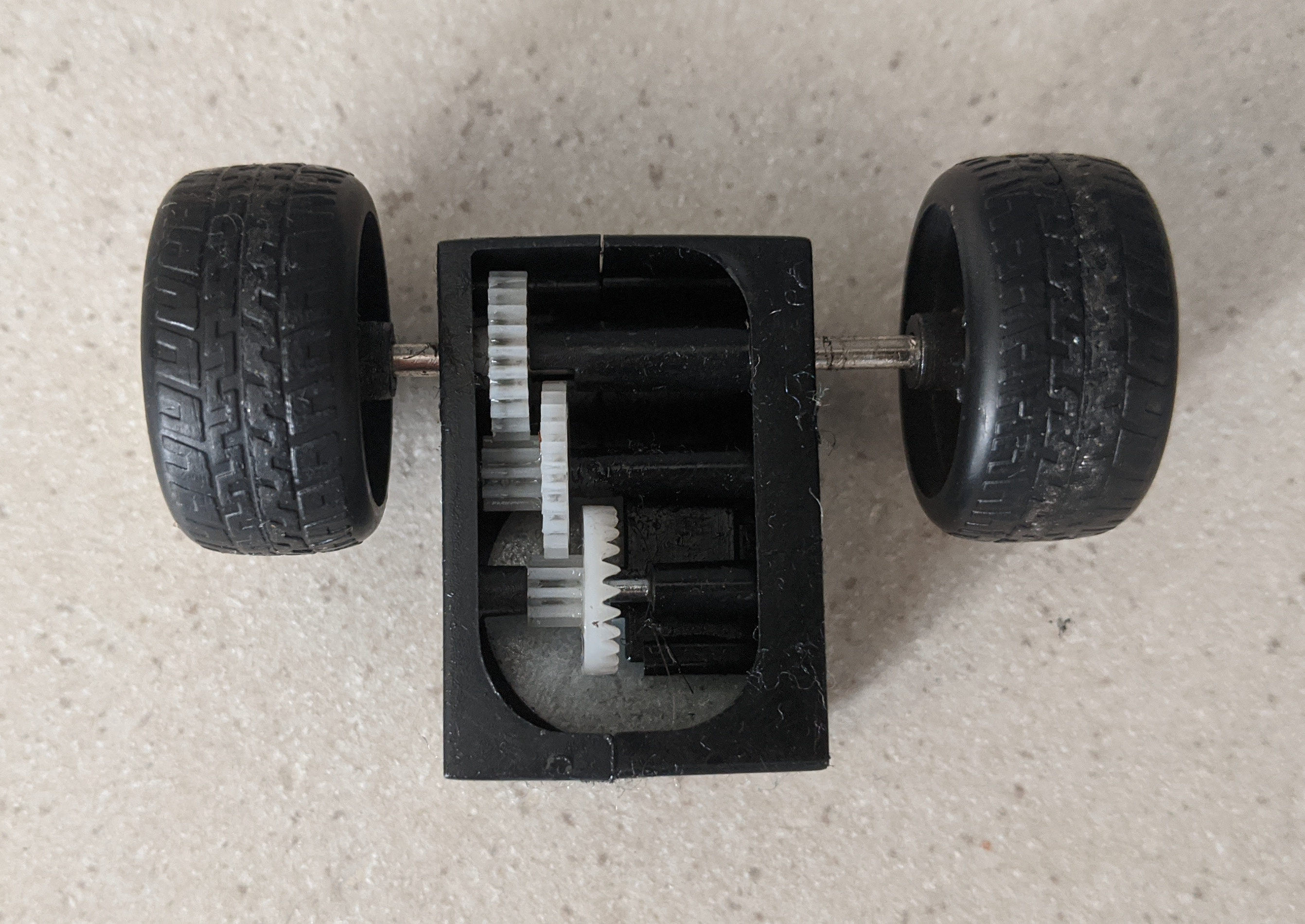Friction Motor on:
[Wikipedia]
[Google]
[Amazon]
 A friction motor is a simple mechanism to propel toy cars, trucks, trains, action figures and similar toys. The motor consists of a large
A friction motor is a simple mechanism to propel toy cars, trucks, trains, action figures and similar toys. The motor consists of a large
 A friction motor is a simple mechanism to propel toy cars, trucks, trains, action figures and similar toys. The motor consists of a large
A friction motor is a simple mechanism to propel toy cars, trucks, trains, action figures and similar toys. The motor consists of a large flywheel
A flywheel is a mechanical device that uses the conservation of angular momentum to store rotational energy, a form of kinetic energy proportional to the product of its moment of inertia and the square of its rotational speed. In particular, a ...
which is connected to the drive wheels of the toy via a gear train
A gear train or gear set is a machine element of a mechanical system formed by mounting two or more gears on a frame such that the teeth of the gears engage.
Gear teeth are designed to ensure the pitch circles of engaging gears roll on each oth ...
with very low gear ratio
A gear train or gear set is a machine element of a mechanical system formed by mounting two or more gears on a frame such that the teeth of the gears engage.
Gear teeth are designed to ensure the Pitch circle diameter (gears), pitch circles of e ...
, so that the flywheel revolves much faster than the wheels. The flywheel's axis is perpendicular to the direction in which the toy faces and in which it moves. When the toy is pushed forward, the drive wheels engage the flywheel. If higher energies are desired, pushing the vehicle forward repeatedly spins this flywheel up to greater speed. When let go, the flywheel drives the vehicle forward. Energy which is input by pushing the car is stored by the flywheel as rotational kinetic energy and can propel the toy after it is released. It is friction between the tyres and the surface on which the vehicle is operating which enables the energy input process, thus giving the name "friction motor" to the device.
As the flywheel, unlike the spring of a pullback motor
A pullback motor (also ''pull back'', ''pull back and go'' or ''pull-back'') is a simple clockwork motor used in toy cars. A patent for them was granted to Bertrand 'Fred' Francis in 1952 as a keyless clockwork motor.
Pulling the car ''backward' ...
, is continuously rotating, the motor may be "pumped up" by pushing the car repeatedly forward. In some cases, the cars work both in forward and reverse; in other cases, a one-way clutch can disengage a component in the gear assembly to prevent input of rotational effort in the reverse sense. Some used a ''zip cord'' pulled from the vehicle body to accelerate the flywheel directly. Another system was the ''Turbo Tower of Power'' (TTP) in which air expelled from a hand-operated pump pushed turbine blades on the flywheel's rim.
These toys were especially popular in the 1960s to 1980s though they continue to be available today.
References
Toy cars and trucks Mechanical toys {{Toy-stub